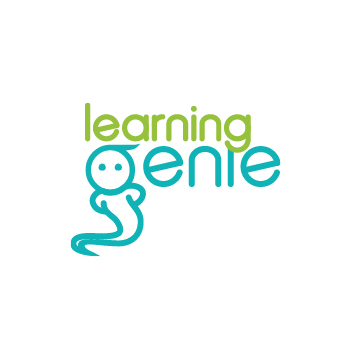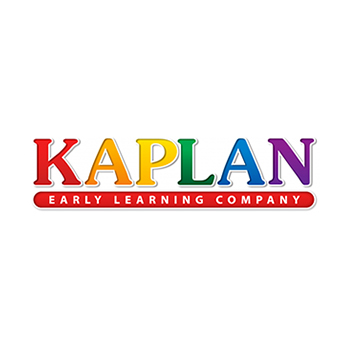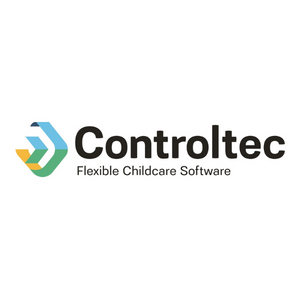In the early childhood field, we usually focus on how our children are learning. On the other side of the coin, how often do we think about the quality of the learning that occurs for our staff members, including teachers, coaches, and education coordinators? In order for our children to have meaningful learning outcomes, we need to attend to the growth and development of the adults who are shaping children’s environment, experiences, and relationships. The science of adult learning can help us do just that!
The science of adult learning includes findings from decades of research in education, psychology, neurology, and more. By combining research from across a variety of fields, we can be sure we are addressing the whole adult learner. If you are a coach, supervisor, trainer, or writer of trainings, read on for research-backed recommendations on how to improve learning outcomes for the adults in your program.
Recommendation #1: Activate learners’ prior knowledge before moving into new material.
Rationale: Adult learners have a whole lifetime of experience in the world. Even when they are learning new facts or skills, it’s likely that the topic isn’t entirely new to them. Our memory is organized in network models, and when we learn new things, we associate the new knowledge with what we already know (Atkinson & Shiffrin, 1968). Learning happens more quickly and easily when a learner’s prior knowledge is recalled before seeing new material (Bransford, Brown, & Cocking, 2000). It can feel like you’re going backwards, but having learners activate their schema (knowledge organization) will make learning more effective in the long run. One way we often do this is by providing an overview of a body of knowledge before diving into the parts, also called an advance organizer.
Example: In a training on how to promote children’s critical thinking abilities, the facilitator begins by situating today’s learning in the Instructional Support domain and Concept Development dimension of the CLASS tool, with which she knows her teachers are familiar. She then asks teachers to brainstorm all the ways they currently have children create, analyze, and evaluate in their classroom. Next, she shares a list of sentence stems for critical thinking questions and asks teachers to choose the ones that might enhance or extend the activities they are already doing.
Recommendation #2: Integrate authentic practice opportunities into the training itself whenever possible.
Rationale: Many of the skills we attempt to develop in adult learners, teachers included, are complex processes or tasks. Especially with complex tasks, learners need to practice and receive feedback alongside initial instruction in order to solidify their new skills (Huang et al., 2015). Simply providing learners with new information isn’t sufficient to result in changes to skills and abilities. Another benefit of including authentic practice in a training is that the facilitator has the opportunity to coach learners so that they develop the skill correctly from the start.
Example: In a training on language development strategies, the facilitator explains each strategy and gives examples. Participants listen and take notes. At the end, teachers role play a conversation with a “student” (played by another teacher) where they apply the strategies they just learned. The facilitator monitors conversations and gives feedback to the teachers.
Recommendation #3: Explicitly build your learners’ investment in using what they are learning in your training.
Rationale: When you design a training, the topic is clearly important to you—you’re spending hours planning for a session, and then you’re putting effort into facilitating it for your learners! But the same can’t necessarily be said for the learners in the room—they may or may not share your enthusiasm, passion, and value for the topic. They may or may not see how what you’re teaching them will help them in their professional life. And without this level of investment, value, and motivation to learn about a topic, their learning and transfer will be reduced (Eccles, & Wigfield, 2002; Pugh & Bergin, 2006). It’s worth spending a few minutes at the start of a workshop to convey WHY you are investing the time in learning about this topic. Will it solve a problem the learners have? Will it improve their children’s learning outcomes? Will it make their days easier or more pleasant? Research on human motivation has shown that we are driven by autonomy, mastery, and purpose (Pink, 2011): we want to feel like we have some control over our actions, we want to feel like we are doing a good job, and we want to feel like our work matters. By explicitly connecting to one or more of these motivations at the beginning of a training, your participants will be crystal clear why it’s important that they pay attention and work hard to master the concepts you’ll present.
Example: At the start of a training on providing emotional support to children, the facilitator shares statistics on how many children in their city have been exposed to adverse childhood experiences, the impact of adverse childhood experiences on learning, and the difference that a strong relationship with a caring adult can make in a child’s life. She then has participants chat with a partner to share what they found compelling from this information, and why they’re looking forward to becoming more emotionally supportive in their classroom.
Recommendation #4: Present information in bite-sized chunks so that learners are not overwhelmed.
Rationale: You may have heard that the reason phone numbers come in the form of 7 digits is that 7 pieces is the limit of humans’ working memory. Recent research has shown that we can hold 4-7 pieces of information (depending on the type), for about 30 seconds (Cowan, 2001). Strategies like repeating the information aloud (rehearsal) or connecting it to meaningful long-term memories can help extend the amount of time that we retain that information (Atkinson & Shiffrin, 1968; Ericsson & Kintsch, 1995). Now consider a typical training in which a presenter stands in front of a PowerPoint and rattles off slides and slides of new information. Participants may pick up on a few nuggets here and there, but when information is coming too fast and in too big a volume, learners will become overwhelmed (Sweller, 1988). If information is truly new and important, present it in small chunks and then provide structured opportunities for learners to process the information. Learners can discuss its importance, connect to their own experience, or think about how it applies to their future actions. The key is breaking up that new information so that it’s digestible rather than overwhelming.
Example: In a training on the Pre-K CLASS tool for new staff members, the facilitator expects teachers to become overwhelmed with the number of dimensions and indicators. She begins with a quick overview of the domains of CLASS, to build a framework (schema) for this knowledge in learners’ minds. She then structures the training to provide an introduction to one dimension at a time, followed by a video example and a follow-up discussion for each one.
Recommendation #5: Leverage adult learners’ ability to be metacognitive to monitor their own learning.
Rationale: In a field where we work primarily with young children, we are focused on developing many executive function strategies, including self-regulation and metacognition. As adults, we have made a lot of progress in applying these strategies from when we were 4 years old! In adult-facing trainings, we can trust our colleagues to evaluate their own learning and determine how they’re doing (Schunk, 2010). This may seem scary to a new facilitator—do I really mean that we can ask our learners whether they understand?! Why, yes! That’s not to say this is the only assessment strategy you should use, but you can ask for and believe learners’ perception of their self-efficacy.
Example: At the end of a training on incorporating read alouds into the daily schedule, the facilitator has teachers answer three reflection prompts in writing: what they are excited to try, what they are nervous about trying, and where they need more support. After the training, the facilitator follows up with teachers to discuss their responses and offer support.
As you can see, none of these principles are rocket science—but they are the science of learning! A group of researchers and stakeholders in the education field are working together in the Science of Learning Development Project, looking forward to the day when all learning opportunities, for both children and adults, incorporate research-based practices for maximum effectiveness. Let’s make sure that early childhood is on the cutting edge of this movement.
References
Atkinson, R. C. & Shiffrin, R. M. (1968). Human memory: A proposed system and its control processes. The Psychology of Learning and Motivation, 2, 89-195.
Bransford, J. D., Brown, A. l., & Cocking, R. R. (2000). How People Learn: Brain, Mind, Experience, and School. Washington, DC: National Academy Press.
Cowan, N. (2001). The magical number 4 in short-term memory: A reconsideration of mental storage capacity. Behavioral and Brain Sciences, 24(1), 87-185.
Eccles, J.S. and Wigfield, A. (2002). Motivational beliefs, values, and goals. Annual Review of Psychology, 53, 109-132.
Ericsson, K. A. & Kintsch, W. (1995). Long-term working memory. Psychological Review, 102(2), 211–245.
Huang, J. L., Blume, B. D., Ford, J. K., & Baldwin, T. T. (2015). A tale of two transfers: Disentangling maximum and typical transfer and their respective predictors. Journal of Business and Psychology, 30(4), 709-732.
Pink, D. (2011). Drive: The surprising truth about what motivates us. New York, NY: Riverhead.
Pugh, K. J., & Bergin, D. A. (2006). Motivational influences on transfer. Educational Psychologist, 41(3), 147-160.
Schunk D. H. (2010). Goal-setting and self-efficacy during self-regulated learning. Educational Psychologist, 25(1), 71-86.
Sweller, J. (1988). Cognitive load during problem solving: effects on learning. Cognitive Science, 12(2), 257-285.
Submitted By:
Stephanie Thai
 " width="1600" height="320" alt="Background Image" class="bnr-b" role="presentation">
" width="1600" height="320" alt="Background Image" class="bnr-b" role="presentation">
















